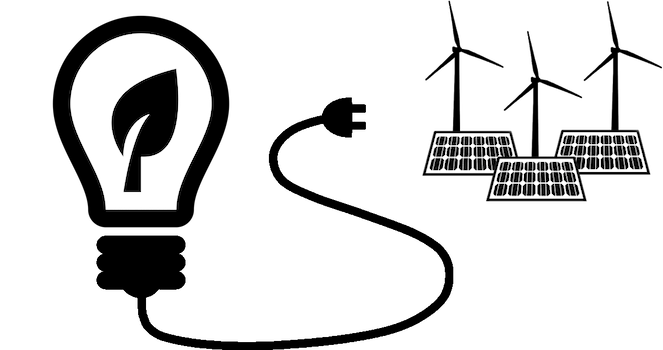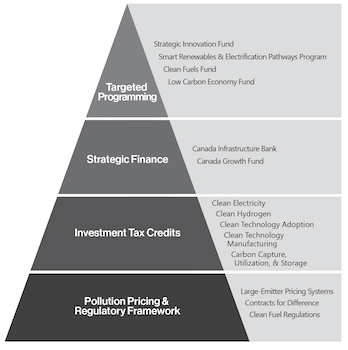Generation grids gird for a challenging future

In its latest budget announcement, the federal government signaled a strong commitment to creating a “sustainable, secure, and affordable electricity grid”, backing up that pledge with $3 billion over the next 13 years, almost $231 million a year. Much of that investment is expected to take the form of renewable energy sources — primarily wind and solar installations — which provide electricity intermittently, at the behest of often unpredictable weather conditions.
That prospect gives pause to the country’s electrical grid operators, who are bracing for the coming demand imposed by a growing number of electric vehicles on Canadian roads. The view from Alberta is especially revealing, as indicated in a report from the Alberta Electric Systems Operator (AESO).
“Increased mitigation for system flexibility will be required by the mid-2020s,” warns the 2023 Reliability Requirements Roadmap, portraying an energy market that assigns a high value to assets that can deal with quickly shifting supply. “The variability of wind and solar assets, along with the quality of short-term wind and solar forecasts, can make the real-time balancing of supply and demand challenging,”
New technologies, carbon policy, broad electrification, and a societal desire for cleaner forms of energy are driving major change, such as Alberta’s decision to phase out coal generation by the end of this year. The grid is expected to transition to about 50 percent gas (potentially with carbon capture and storage), along with a mix of wind and solar.
“You hear about transformation of the grid,” Rob Davidson, AESO Vice-President, Grid Reliability — Projects and Planning, told Research Money. “It’s well underway now, particularly from the supply mix which is changing with increased renewables.”
Planning scenarios
Alberta is unique in Canada in that it has never owned and operated its own power company, relying instead on private companies. Since 1996, the province has operated Canada’s only truly competitive wholesale electricity market (the Power Pool) through which all electricity, whether generated in Alberta or imported into the province, is bought and sold. The market, which AESO operates, is currently an “energy-only” model, meaning that generators are paid only for the energy they produce.
The Roadmap employs scenario-based projections for a decarbonized electricity grid and increasing electrification of the broader economy. The scenarios are characterized by significantly higher volumes of renewable energy generation, energy storage, other forms of low-carbon generation, and changing load patterns.
More specifically, the report outlines a Renewables and Storage Rush scenario, based on data in the separate 2022 Net-Zero Emissions Pathways report, and a Clean-Tech scenario, which is based on the AESO 2021 Long-Term Outlook.
The Renewables and Storage Rush scenario assumes that Alberta’s electricity system will move towards net-zero emissions through significant capital investments. It considers limited new low-emitting thermal generation, significant amounts of intermittent wind and solar generation, and a large penetration of energy storage development that plays an important role in managing the intermittent generation.
The rush is on
Based on what the AESO is seeing from new projects, Davidson argued that the system is “trending very much” towards the net-zero Renewables and Storage Rush scenario. “However, we do monitor the pace of change, and then we'll adjust it based upon new information that we have.”
Davidson said the AESO would need more dispatchable generating assets, such as natural gas, while storage — including batteries, pumped hydro, and hydro dams — will become increasingly important. The system currently has 90 MW of battery electric storage and is seeing increased storage, with an additional few thousand megawatts of projects looking to connect to the Alberta grid.
Above all, Davidson explained, operators are looking at ways to respond quickly to any change in supply or demand.
“The most urgent issue that we're dealing with is Under Frequency Load Shedding, a protection system that we have in place,” he said. “It's really there as a last resort to protect the system from going into cascading events.”
If the AESO loses a large supply source, such as the 500 KV transmission line with British Columbia, the resulting imbalance drives down the power frequency. In June 2021, this link tripped, and the frequency declined enough to trigger a loss of power for residential consumers.
“If we lose that tie-line, then we need to make up that supply loss within Alberta, and we have to do it very, very quickly,” said Davidson. “And the way that that happens is the internal generators have their primary frequency response — an automatic control that then tries to increase their generation to a point at which we can offset that loss.”
To mitigate reliability risk in the short term, the AESO plans to use what it calls Load Shed Service for imports or Fast Frequency Responses. When the frequency declines, AESO can turn to certain load customers, who agree to help by being quickly taken offline following the sudden loss of imports across the inter-ties.
“These are loads that are actually paid for per month to provide this service, and so that obviously helps us in avoiding tripping residential loads,” said Davidson.
R$
| Organizations: | |
| People: | |
| Topics: |
Events For Leaders in
Science, Tech, Innovation, and Policy
Discuss and learn from those in the know at our virtual and in-person events.
See Upcoming Events
You have 0 free articles remaining.
Don't miss out - start your free trial today.
Start your FREE trial Already a member? Log in
By using this website, you agree to our use of cookies. We use cookies to provide you with a great experience and to help our website run effectively in accordance with our Privacy Policy and Terms of Service.





